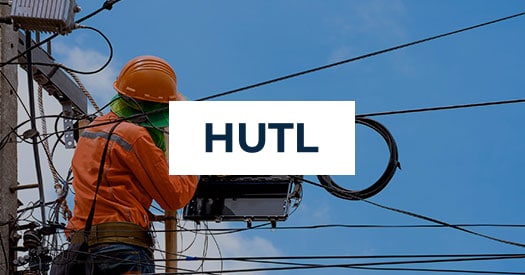By Ambrose O’Callaghan
Utilities stocks became a prime target for investors who sought stability and income over the course of the 2010s. Low interest rates over that period pushed many investors away from traditional investment products. Utility stocks offer dependability and consistent dividend payouts that were much more likely to keep up with inflation in the previous decade.
The investment environment has undergone significant changes in the first half of the 2020s. Runaway inflation inspired a dramatic policy change from the United States Federal Reserve, the Bank of Canada, and central banks in the rest of the developed world. Central banks elected to pursue the most aggressive interest rate tightening program since the early 2000s. As a result traditional higher dividend paying products may be entering back into favour in this higher, but what appears to be, a peaking interest rate climate.
North American markets have sustained the momentum that was built in the final months of 2023 into the midway point of 2024. Technology has been a dominant force in this environment, but other sectors like communication services, healthcare, and consumer discretionary have posted strong returns. Meanwhile, utilities have struggled alongside real estate. However, this traditional defensive play might be an opportunity play after the Bank of Canada pursued its first interest rate reduction since March 2020, in the throes of the COVID-19 pandemic.
What constitutes a defensive sector?
A defensive sector contains companies that have historically proven stable regardless of fluctuating economic and market conditions.
The initial stages of the COVID-19 pandemic had a devastating impact on consumer discretionary stocks. These are companies that produce non-essential goods and services and are classified as non-defensive. For example, movie theatres were forced to close their doors for months on end in 2020 and 2021, which forced these entities to hang tight as their revenues were nonexistent. Also, stocks in Hotels, restaurants, and other leisure activities were also throttled during this period.
On the other hand, defensive stocks, like those in utilities or consumer staples, were often more reliable during this volatile period. Utilities are considered “defensive”, given its steady and attractive income streams, low correlations to broad markets, and sustainable cash flows driven by the necessity of everyday consumer use.
Emera Incorporated is a Halifax-based energy and services company that is engaged in the generation, transmission, and distribution of electricity to various customers. Like its peers, Emera suffered a sharp dip in mid-to-late March but quickly rebounded. Emera is one of several defensive utility stocks that make up the Harvest Global Equal Weight Global Utilities Income ETF (HUTL:TSX).
Why does the utility sector offer an opportunity in the middle of 2024?
Utilities are services, such as lighting, heating, and water, that are provided and paid for and by all citizens. The nature of these essential services means that they are made available and are consumed regardless of economic and market conditions. Indeed, the ongoing strategic energy transition means there is still room for steady growth in this mammoth industry. That makes these entities a target for investors who are looking for stability in a period of flux.
The HUTL ETF offers broad-based exposure to the utilities sector for investors who are looking for an ETF that is defensive and income oriented. Some of the benefits of owning the HUTL ETF include exposure to large-cap global utility stocks with long-term sustainable cash flows. Moreover, this ETF is specifically designed for investors who are hungry for a defensive position that pays out monthly income. The ETF achieves this through exposure to defensive utility stocks and delivers monthly income through Harvest ETFs’ active covered call strategy.
On Thursday, June 6, 2024, the Bank of Canada elected to cut its benchmark interest rate by 25 basis points – from 5.00% to 4. 75%. The same week saw the European Central Bank (ECB) slash its benchmark rate to 3.75%. The United States Federal Reserve has continued to stand firm, but these downward moves from its closest allies may be the strongest indication yet that the tightening cycle is well and truly behind us.
A softening monetary policy could mean that there is an opportunity to add HUTL at a discount right now.
Reasons the HUTL ETF is right for defensive investors today
The HUTL ETF provides global exposure and adds scale and diversification. Beyond that, Harvest also employs its active covered call writing which helped in a tough monetary tightening environment. Utilities allow investors to position themselves defensively for the current stage of the rate cycle. A couple scenarios could play out in the near future from the fight to bring inflation down, that is reaching a “soft landing” or a “hard landing”. In both scenarios utilities seem to perform well based on the historical records. In a “soft landing” policymakers succeed in taming inflation without causing significant economic deceleration, in which case utilities could extend positive total returns as rates come down and markets rebound. However, in a “hard landing”, wherein the policies lead to a recession, utilities have historically provided a better performance compared to the broader market.
As always, the NAV performance for the HUTL ETF does not tell the whole story. The HUTL ETF has paid out a monthly distribution of $0.1166 per unit on a consistent basis since its inception in 2019. Using the recent distribution for October and based on the market price as at June 11, 2024, the current yield amounts to a relatively attractive 8.47%.
Investors who want higher monthly income and growth potential can consider the Harvest Equal Weight Global Utilities Enhanced Income ETF (HUTE:TSX) is designed to deliver enhanced monthly income and growth opportunities by applying modest 25% leverage to an investment in HUTL. HUTE last paid out a monthly distribution of $0.0851 per unit. That represents a current yield of 10.52% as at June 11, 2024.
Ultimately, HUTL and HUTE offer exposure to a sector that has come under pressure due to interest rate increases, both offer attractive valuations with strong dividend yields. Importantly, it provides diversification for Canadian investors looking to add to the Utilities sectors.
Disclaimer
Commissions, management fees and expenses all may be associated with investing in Harvest Exchange Traded Funds (managed by Harvest Portfolios Group Inc.). Please read the relevant prospectus before investing. The funds are not guaranteed, their values change frequently, and past performance may not be repeated.

Ambrose O’Callaghan
Ambrose O’Callaghan is the Content Editor at Harvest ETFs. Ambrose brings over a decade of experience in the financial services industry to the Content Editor role. He is responsible for providing context to current trends, developments, and analyses to help make sense of the ETF market and emerging themes. With a strong knowledge of the Canadian equity markets and Harvest products, Ambrose regularly provides commentary on a broad array of market topics.












